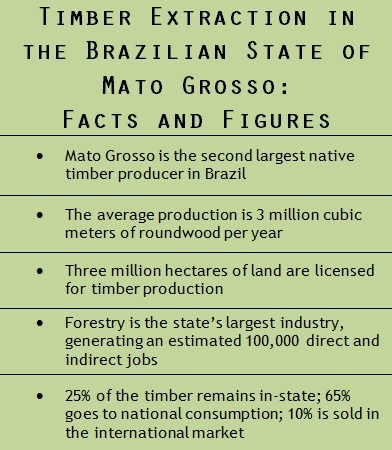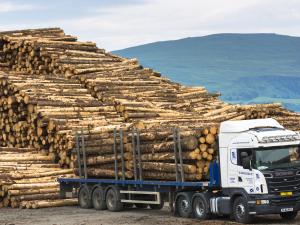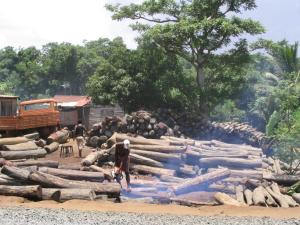The Instituto Centro de Vida (Life Center Institute - ICV) recently released a report mapping illegal forest clearings in the Brazilian state of Mato Grosso. The analysis was part of a Global Forest Watch Small Grants Fund project to assess the legality of timber extraction by comparing tree cover loss vis-à-vis authorized forest management operations, indigenous territories and protected areas between August 2012 and July 2013. The analysis was a continuation of multiple studies conducted by ICV and the Amazon Institute of People and the Environment (IMAZON) since 2009.

How they did it
Researchers at ICV replicated a four-step methodology previously established by IMAZON. First, they prepared and processed U.S. Geological Service satellite imagery of Mato Grosso; second, they used the satellite imagery data to identify forest areas cleared between August 2012 and July 2013; third, they compared the cleared spaces with areas protected by the Brazilian government, (e.g. indigenous territories), as well as areas of forest management operations and areas where forest clearing was authorized, among others; and fourth, they validated their analyses with government authorities and experts.
What they found
- There was a 53% increase in clearing compared to the August 2011 - July 2012 period. This is the greatest area cleared since 2009 (Figure 1).
- Slightly more than half (54%) of the areas were cleared without valid authorization, 82% of which occurred outside areas allocated for forest management, 10% within those designated areas, and 2% of which was considered illegal because it was impossible to verify the legality of the clearing.
- Of the clearing which happened outside of designated forest operations areas, 34% occurred in areas with unclear land tenure, and 26% in indigenous territories and protected areas. Clearing in indigenous territories increased by 1,194%, while clearances in protected areas experienced a 108% increase.

The research offers some insights...
The analysis concluded that:
(a) a significant portion of the illegally-cleared areas fall outside areas under forest management/timber production; and
(b) most of the illegally-cleared areas occur in areas with unclear land tenure, indigenous territories, or protected areas.
This means that this is a problem of illegal deforestation, and the question remains: where is the timber from these areas going? If it is traded (which is probably the case) the timber is entering and tainting the legal timber supply chain.
While there are several existing monitoring and control systems to counter illegal logging administered by the state and federal government, it appears that they are not effective to stop mass illegal logging in the state. Because they seek to address illegal logging within areas that have forest management plans despite the fact that 82% of illegal logging in Mato Grosso occurs outside these areas, they are being used to launder timber from illegally-cleared areas and mix it with timber from legal timber operations.
Recommendations from the ICV report include increasing timber harvesting monitoring using remote sensing, and expanding controls to timber processing facilities (e.g. sawmills). They also note that it is critical to complement the monitoring of the implementation of forest management plans with field visits during the time-frame when the authorization is valid.
We look forward to seeing how these results are used to increase efforts in Mato Grosso to stop illegal logging.
Sources:
-
“Mapeamento da ilegalidade na exploração madeireira entre agosto de 2012 e julho de 2013,” (“Illegal mapping in logging between August 2012 and July 2013,” in Portuguese)


